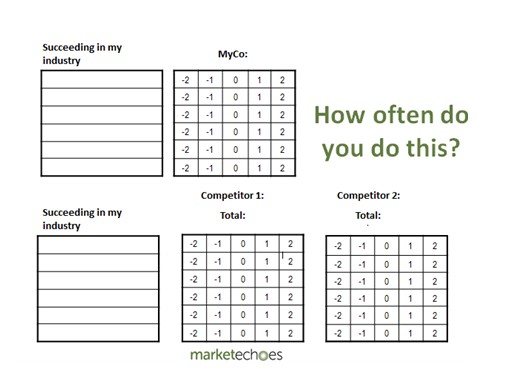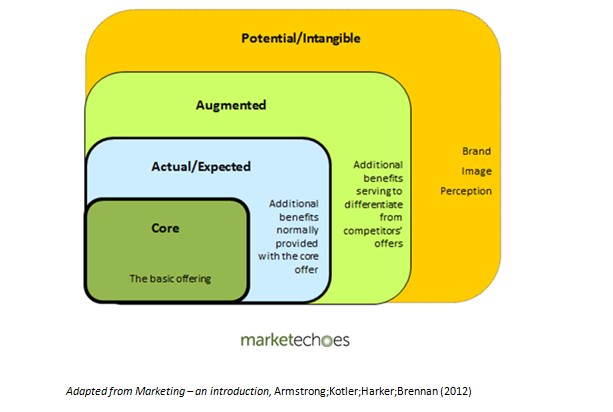I was recently asked by Bradford University School of Management to deliver a lecture to businesses.
They said “can you do half an hour on strategy?” I’m used to delivering two or three day strategy workshops and MBA programmes. But 30 minutes?! What can you say about strategy in 30 minutes? On reflection, quite a lot and on the principle of less is more I decided to concentrate on what I believe are the three foundations of effective strategy – my own Three Cs.
• Customers – we can’t live without them.
• Competitors – our customers can live without us.
• Control – making sure our customers have valid reasons to buy from us and not the competition, time and again.
So how do you put the Three Cs into action? Here is my own 7 point toolkit.
1 | Understand the definition of strategy
At its most basic, strategy is looking at a time period (control), understanding our strengths (in relation to customers) and putting these altogether in relation to the business environment in which we operate (customers and competitors). The three need to work together. I looked at marketing strategies in this earlier blog.
2 | Master the business environment

It’s surprising how many managers work in a vacuum. I’ve heard them say I don’t need to worry about my competitors, just get my own product right. Well it’s not as simple as that, unless perhaps all your competitors are thinking the same (unlikely).
So we need to understand what’s happening in the macro environment (the economy, society, regulation, technology) and the micro environment (clearly understand our customers and potential customers – how they think and buy, what’s changing and the same for our competitors).
I work with many of my clients on competitor profiling, something that’s rarely done in a methodical way yet it’s really not that difficult. List five factors necessary to succeed in your area of business and on a simple scoring basis, perhaps -2 to +2, compare your company with that of your top two competitors. Is it you or the competition doing best? If the latter it’s likely that the competition will have taken most advantage of the changes in the business environment. You’re not in control. Think about taxis and Uber. Incumbents can protest all they wish but who will be the eventual winner?
3 | Winning needs distinctive capabilities
Mastering the environment needs distinctive capabilities. It’s interesting that we always talk about human resource management. Actually we should be talking about human capabilities management or just capabilities management. There is a big difference between resource and capability or what we’ve got rather than what makes us win. To really succeed we need distinctive, competitively different capabilities.
4 | Now we can develop winning products and services

Here’s my favourite academic model! Developed by American author Philip Kotler, it allows us to take a clear look at how our products and services are constituted and where they are or can become competitively successful.
There are four key elements. The core product/service, what does it do? The actual or expected – what do customers expect from all suppliers? The augmented – what do we need to do to successfully differentiate from the competition and, lastly, the potential or intangible otherwise known as the brand – does our brand sell the product?
Let’s use this model with a couple of similar estate cars – Volvo and Skoda. In terms of the core and expected they’re pretty much the same. The Volvo succeeds in the potential because we all know its reputation for safety (augmented). The Skoda succeeds in the augmented through value for money and breadth of included features. Use the model to compare (once more) your product/service and those of your top two competitors.
5 | Think about the competition we don’t yet know!
Let’s return to Uber or low cost airlines, direct sell insurance or even circuses.
All pretty predictable – except that none of the incumbents did the predicting. It’s all about control. How many of you have been to Cirque du Soleil? A classic strategic move from the competition we never knew about. Circuses remained pretty much the same for 200 years. Yet people fell out of love with them. Why? Principally because of the use (and smell) of animals. Cirque du Soleil attracted back the people who had exited because of the use of animals, and also attracted people who had never thought about the circus but who did like live theatre entertainment. A new global market for the circus was created.
6 | Beware of the demons!
No matter how good the strategy and its focus on the Three Cs, there’s always going to be the internal problems of getting it implemented. It’s that control thing again. What do we hear when people are tasked with looking at the strategic direction of their organisation? I’ve got too much to deal with, I’ve got too much work on, I’ve got to react to the latest crisis, politics in this company won’t let any of this happen. We need to beware of these demons and make sure they don’t become the catalyst for strategic failure.
7 | Now you have competitive advantage – you are in control
The above six points will help you achieve competitive advantage. I like to think competitive advantage as comprising the following:
• Value – whatever we do provides value to our customers
• Rarity – a part of what provides value is exclusive to our own business
• Inimitability – it’s difficult for our competitors to imitate what we do
Now, bring these altogether and you’re very much in control!
Any more Cs?
During the lecture, one member of the audience did mention a fourth C in strategy– Culture, saying that the Three Cs cannot exist without the right culture. I agree, the right culture is at the heart of a great business, but for me culture is a manifestation of the right customers, understanding the competition and control.
I hope you’ve enjoyed this run through of my Three Cs of strategy. I’d be very interested to know whether you have any Cs you’d like to add to it or whether you believe that there are other elements of strategy that are equally or more important.
This guest blog was provided by Julian Rawel, Chief Executive of Market Echoes
Julian Rawel
Market Echoes was set up by Julian Rawel, a marketing professional with a track record of customer focused entrepreneurship, management, marketing and education. Julian continues as an in demand international lecturer and mentor and, of course, as Chief Executive of Market Echoes where his specialty service is Strategic Marketing and his passion is to help organisations profit from a genuine focus on the customer.
Latest posts by Julian Rawel (see all)
- How Do You Achieve Teaching Excellence In Your University And As An Academic? - September 15, 2017
- Customer Service – Do Scripts And Processes Improve Or Destroy? - September 6, 2017
- Innovation And Excellence In Teaching And Learning - September 1, 2017








Leave a Reply